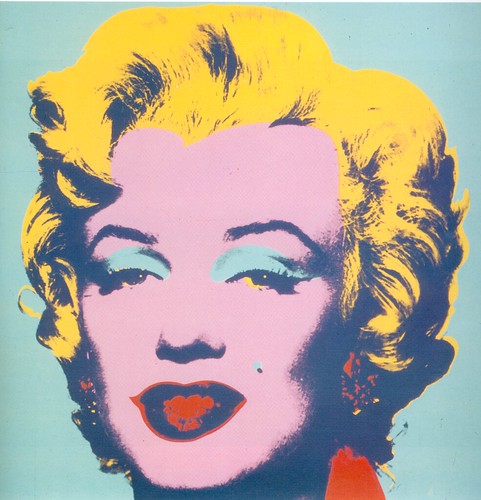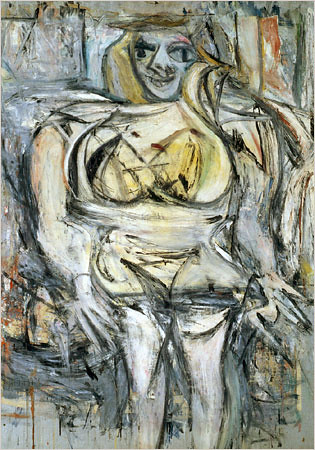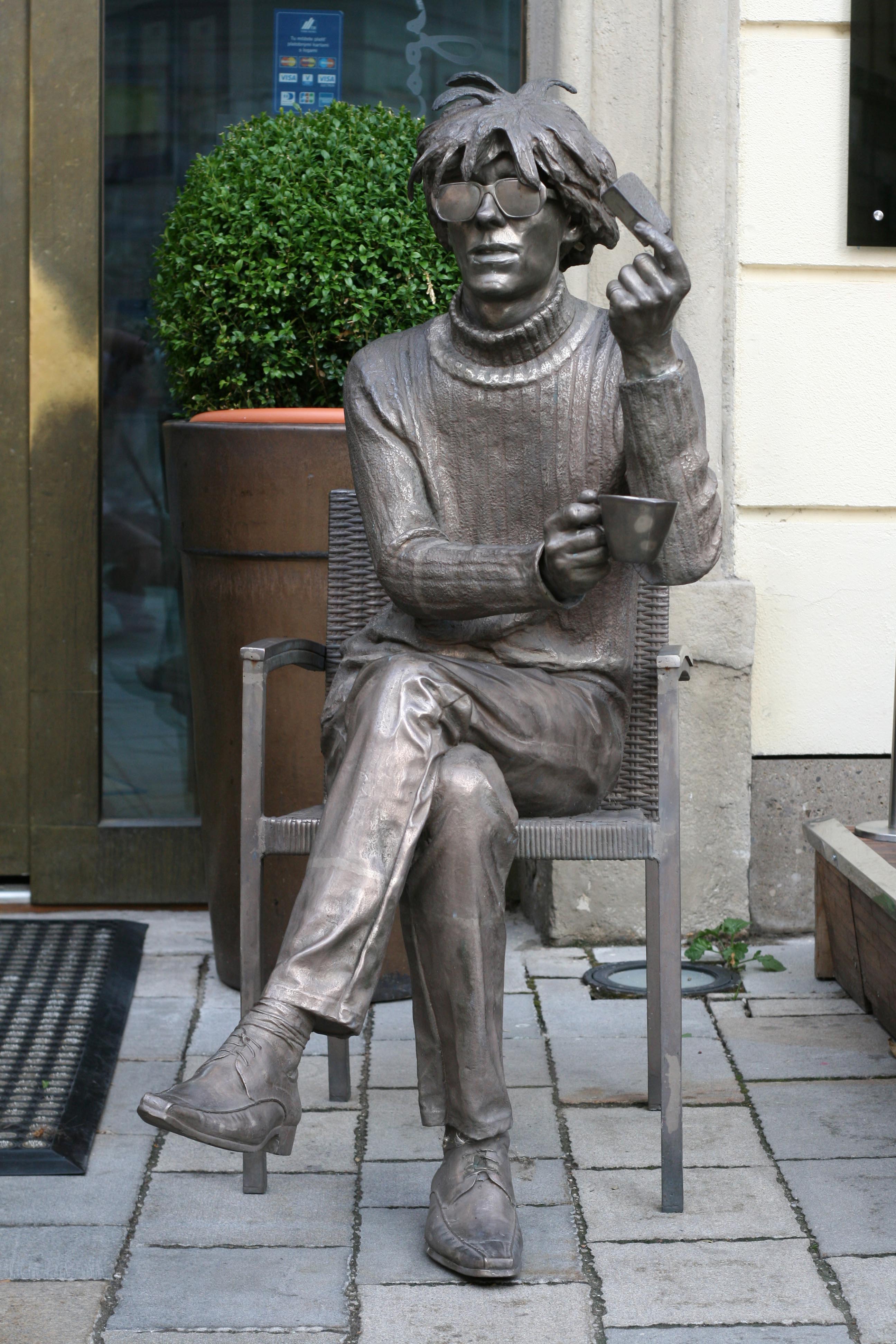Andy Warhol: Product for Sale
This project examines the life of Andy Warhol and his creation of not only tradition works of art, such as paintings, but also an artistic identity where he treated himself as a salable product. Just as his art challenged previous conventions, Warhol’s identity challenged the idea of the individual and suffering artist perpetrated by the Abstract Expressionists of the 1950s. Warhol created a life focused on beauty and never looking beyond the surface that affected the way his art was received. With his circle of eccentric friends, never closed “Factory” and habit of avoiding interviewers’ questions, Warhol became a celebrity based on both his artistic talent and his personality (or lack thereof). This combination has impacted and continues to impact the art scene today, which can seen in the expanse of his solo exhibitions around the world and the proliferation of the market prices of his paintings.
Pop art in itself is an impersonal style based on common signs that everyone can recognize. Unlike the Pop art style found in England, American Pop art did not have a critical opinion of commercialism, as seen in the works by Warhol. As described by Paul Bergin in an article called “Andy Warhol: The Artist as Machine”, Warhol’s art is “stripped of personality and emotion and concerned with only the image, the obvious” (359), which becomes clear when looking at a works such as his series of Campbell’s soup cans where the image is impersonal and bland as possible. In his portraits too, Warhol focused only on the surface of his sitters and did not attempt to reveal something more than their pubic image. His portraits of Marilyn Monroe and Liz Taylor, for instance, celebrate the public images of the celebrities and deny “the existence of a private self” (Whiting 58). For both celebrities, Warhol chose to emphasize their iconic features such as their hair, makeup and lips and not express any of the psychological turmoil either star was experiencing at the time (63).
Warhol’s choice of medium also demonstrates his desire to create impersonal images that differ greatly from Abstract Expressionism. The use of the silk-screen eliminates the appearance of the artist’s “hand” that was so important to Abstract Expressionists and is more mechanical technique (Whiting 70). Here again, Warhol is creating a distance between art and the private life of the artist by separating himself from his art with a machine. This is the complete opposite of Abstract Expressionism, which strives to indicate the presence of the artist through gestural brushstrokes that reveal something about the individual who created the work (70).

In this work by Warhol there are no brushstrokes present.
This image was taken from Flickr Commons.

In this work by Kooning, an Abstract Expressionist, there is a clear indication of the artist’s presence through the use of messy, agitated and thick brushstrokes.
This image from taken from Flickr Commons.
What makes Andy Warhol so interesting though, is that he took the commercial style of Pop art a step further by becoming a work of his own art himself. Warhol did not just take away the presence of the artist in his artwork, he tried to remove his presence altogether. He did this by creating a persona that like his art, was all about surface and beauty and the public image was all there was to see, there was nothing behind it. To him his work and his life were inseparable and there was nothing more to him than his work (Graw 100). Some of the ways he crafted this image was through his responses to interviews and through his studio, the Factory.

Statue of And Warhol in Bratislava, Slovakia. This is a wonderful demonstration of Warhol as an artificial specimen available for scrutiny. It also embodies Warhol’s quote “I wish I were a machine”.
This image was taken from Wikimedia Commons.
View sources for this page here.
No Comments »
No comments yet.
Leave a Comment